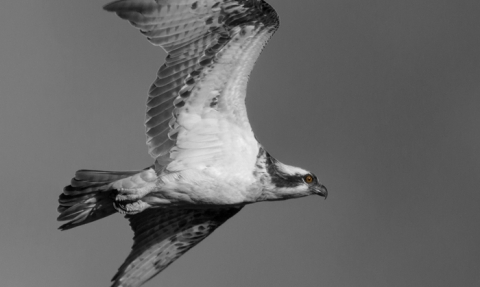
Ospreys - Decline and Exctinction
Historical references to Ospreys in Wales
Ospreys would once have been widespread throughout most of Britain. As they are able to catch fish in both salt-water and fresh-water environments they would have inhabited many estuaries, lakes and lochs around the country. Despite an abundance of suitable habitat no official written records exist of ospreys breeding in Wales until 2004. However, there are many references to them over the centuries.
The medieval Welsh manuscript 'The Mabinogion' tells the tale of “The Eagle of Gwernabwy”. This story describes the eagle as being “the one who has wandered most”, possibly a reference to the ospreys' migration. It tells of how the eagle attempted to catch a salmon from Llyn Lliw that was so large it almost drowned trying. This eagle is likely to have been an osprey.
Birds and animals are often used on heraldic Coats of Arms and the osprey is no exception. Both the Coat of Arms of the city of Swansea, granted in 1316, and the Coat of Arms of West Glamorgan feature an osprey, suggesting that they once bred in the area. Ospreys have a further connection to that part of Wales in the name of the Swansea based rugby team - The Ospreys.
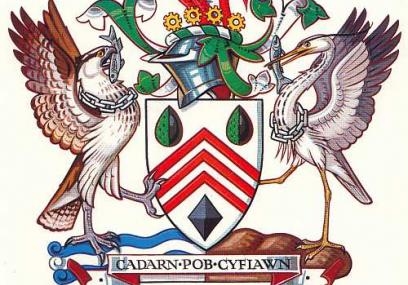
West Glamorgan coat of arms showing and osprey and a heron
Closer to home, a Flemish engineer working on drainage systems in the Dyfi estuary in 1604 mentioned several “fishey hawkes” breeding close together along the River Dyfi. This is almost certainly a reference to ospreys and the earliest date that can be given to them breeding in the area and in fact Wales, although it is highly probable that ospreys were once a common sight in Wales.
The modern Welsh name for the osprey is Gwalch y Pysgod, meaning Fish Hawk, but several other names exist in the Welsh language for osprey suggesting that it was once a native species. Here are some of these names:
- Gwalch y Mor (sea hawk),
- Barcud y Mor (sea kite),
- Pysgeryr (fish-eagle)
- Gwalch y Weilgi (strait/sea hawk)
Ospreys and Conflict with People
During the middle ages almost every big house and monastic establishment had a fishpond to ensure a supply of fresh fish for its owners. The fish from these ponds were particularly important as medieval Britain was largely a Catholic country where the eating of meat was forbidden on Fridays - the eating of fish however, was allowed.
The fishponds also attracted ospreys, bringing these magnificent fish-eating bird of prey in to direct conflict with people. As a result many of them were hunted and killed. Some of these ancient fish ponds survive to this day and continue to attract ospreys.
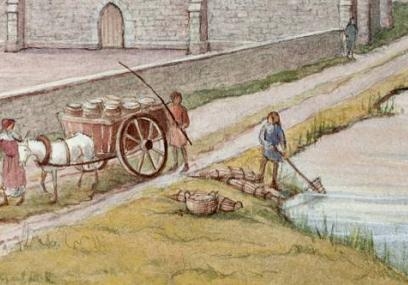
A medieval fish pond
Later on in the eighteenth and nineteenth centuries, the remaining pairs of British ospreys were severely persecuted by gamekeepers, egg collectors, and trophy hunters. With the additional pressures of habitat loss in during this time osprey numbers continued to plummet and by 1916 they had become totally extinct as a breeding species in Britain.
There are records of ospreys being killed in Wales, one was reported as being shot near Llandudno in 1828, another was shot at Waunfawr near Caernarfon in October 1937. This shooting in 1937 is after ospreys had ceased to breed in the UK, it shows that migrating birds were still passing over the UK but were not able to breed.
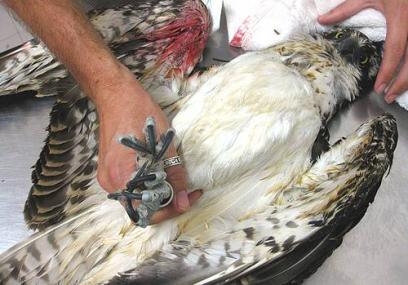
An osprey recovers after being shot
Extinction
In 1916 the last known pair of ospreys nested in on an island on Loch Loyne, Scotland. These iconic birds had finally succumbed to the pressure of shooting, egg collecting and habitat destruction. It would be almost 50 years before ospreys returned to breed again in Scotland.
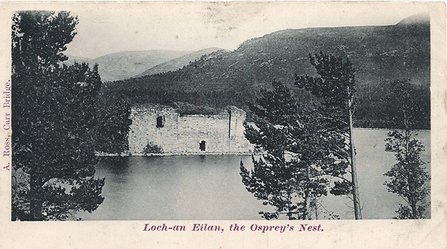
The last known pair nested in 1916 on an island on Loch Loyne.
Knowing that human persecution once drove the UK ospreys population to extinction should mean we have learnt lessons from the past, however, these beautiful birds still face the same threats over 100 years later. Despite being protected by law unfortunately, egg thieves are still operating today and sadly, osprey shooting is still rife not only across many parts of Europe but also in the UK. Ospreys populations are recovering slowly but there is still a way to go before they no longer need the support of conservation projects.